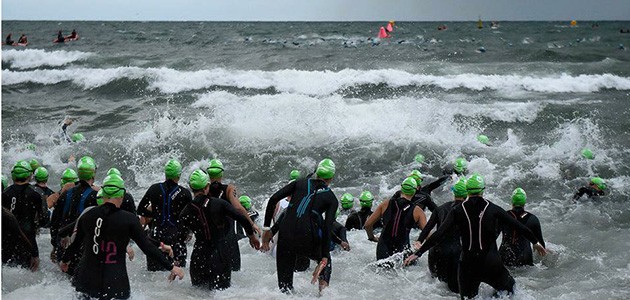
Around 90% of our beginners in our triathlon training are either not strong swimmers or not confident swimmers, which is mostly due to the fact that they have had very little (or any) swimming training. Our swimming tips will help you gain confidence in the pool and open water.
Pool Swimming Etiquette
Swimming in a pool is a great way to work on your technique and fitness, however it can be frustrating if swimmers don’t observe ‘swimming etiquette’. To ensure every swimmer has a great swim, do your best to observe and follow the pool rules.
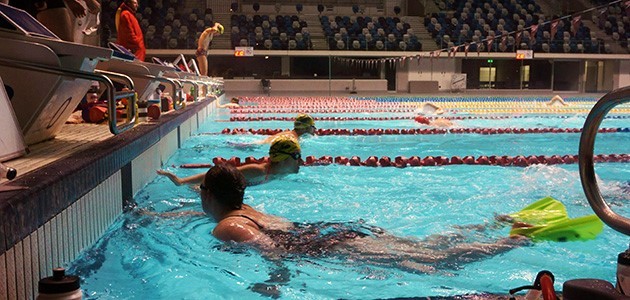
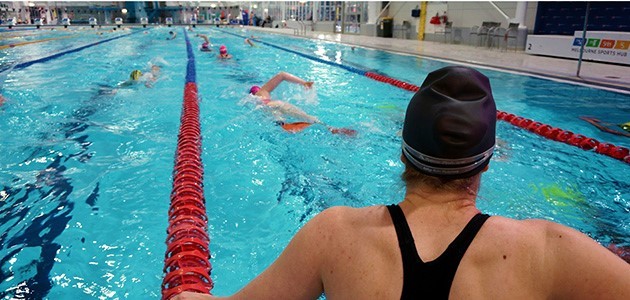
Pool Etiquette for all levels of swimmers
Allow swimmers doing faster laps than you to swim ahead of you. By doing this, you won’t feel the pressure to attempt to speed up, thus affecting your technique.
When resting or waiting at the wall, you should stay as far to the left of the lane as possible to allow those swimming through to either tag or flip on the wall.
Lower swimmers starting a set should wait to push off the wall until faster swimmers have passed; i.e. don’t push off right in front of a faster swimmer who’s coming into the wall.
An overtaking swimmer should gently but distinctly touch the feet of the swimmer being overtaken; it may take two or three touches for them to notice properly.
A swimmer who feels a touch on the feet from an overtaking swimmer, should continue to the next wall, then stop in the left corner of the lane to let faster swimmer(s) past.
Swimmers should always be aware of the gap behind them and try to anticipate when that swimmer (if he/she is faster) is likely to overtake him/her.
A lead swimmer who sees another swimmer coming up close behind as he/she turns at the wall, should consider stopping and moving over immediately at that wall in order to let the faster swimmer past. It will then put a stop to ‘blocking’ and creating a situation where toe-touching becomes necessary.
If more than one swimmer is bunched close behind, the swimmer being overtaken should allow the entire group of faster swimmers to pass before pushing off the wall again. For example, don’t push off right in front of someone else who’s also obviously faster.
Swimmers being overtaken should not attempt to speed up (or slow down) once ‘tagged’, nor should they jump in and ‘tag back’ the new lead swimmer on the next lap.
Overtaking swimmers should not attempt to swim ‘wide’ past a slower swimmer—unless there are only a few swimmers in the lane—since in most cases this presents a hazard to other oncoming swimmer(s), forcing them to pull over to get out of the way.
In the rare case that a passing swimmer does swim wide, he/she should be confident in his/her ability to sprint into the field of vision of the lead swimmer well before he/she gets to the wall. Otherwise, this sets up for a collision at the wall as both swimmers attempt to turn on top of one another. In the case of any ambiguity at the wall, the swimmer whose head is behind should give way to the swimmer whose head is in front.
In the case that a strong swimmer finds him or herself at the back of a line of several slower swimmers in circle format, it is acceptable (after looking carefully) to move to the other side of the lane mid-length and proceed in the opposite direction, somewhat ahead of the line he/she had been trailing.
Athletes are advised not to stop in any part of the lane, other than the wall. Not only can this create confusion for other athletes who are approaching the wall to tag or flip, but it can also create collisions. If you need to adjust your goggles, swim cap, ear or nose plugs – you are advised to wait until you reach the end of lane.
Open Water Swimming Tips
Open water swimming can be daunting, even for a seasoned competitor, but as the weather starts to warm up over spring and summer you know it’s time to get out in the bay and practise your open water swimming. Beginners who join Tri Alliance have the benefit of training in groups with an experienced coach (in both the pool and the ocean). Check out our tips to help you gain the confidence you need in the open water.
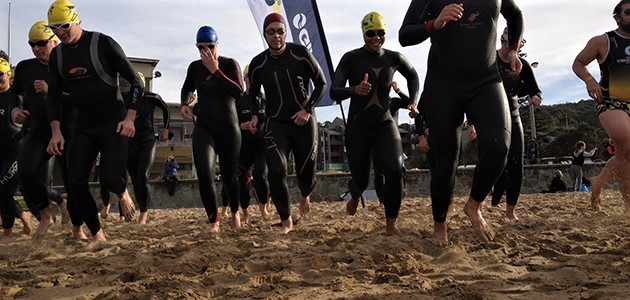
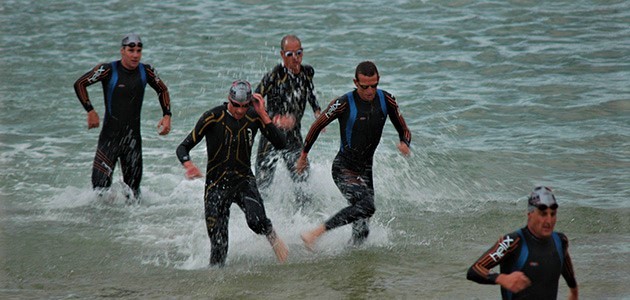
Never, swim alone! Know your skill level and don’t go too far out of your depth.
Learn to feel comfortable floating on your back. If you get into trouble, you can simply flip onto your back with your feet to the shore (this stops the waves hitting your face). Wait until you catch your breath and feel comfortable enough to make your way back to shore.
Practise entering the water. You want to run off the beach into the water with knees high and legs kicking outwards to avoid resistance from the water on your way in. When your legs start to resist against the water (usually mid thigh – no deeper), you then need to start ‘porpoising’.
If the water is chopping, try to time your porpoising so you dive under the white ‘broken’ waves and swim over rolling green waves.
Use high elbows when you begin to swim to get you over the waves or rough water that forms close to the shore.
You want to practise and learn to breathe both sides. This will assist in races where you might be swimming in different directions and waves could be coming from either side.
Alternating sides of you body to breathe is also necessary so that if it is choppy in the open water, you can breathe away from the waves.
Sighting is one of the most important parts of open water swimming. If you are not good at sighting, then you will find yourself swimming a lot further than you have to.
To practice sighting, look up every 5-10 strokes to make sure you’re going in the right direction.
Sighting should not slow you down or break your stroke. Simply lift your head so your eyes just come just above the water. Have a quick glance to make sure you are on the right track and then turn your head to its normal position and continue swimming.
You don’t want to hold your head up for too long as doing so will drop your lower body in the water, which creates unnecessary drag and will therefore slow you down.
There are a few things to remember when coming to a buoy. You may not want to head straight for it if you are in a pack. Swimmers tend to bottle neck trying to get around the buoy as they try and turn around it as close as possible. Save yourself the trouble and swim a little wider. This will stop you from getting stuck in the traffic and having to slow your stroke down.
When you approach, make sure you have the buoy in your sight. As you approach pull your inside arm (arm closest to the buoy) under your body as your round the buoy. This will get your around faster.
In the swim – drafting is legal. And you can save a lot of energy (and time) by swimming behind someone who is a little faster than you.
Once you are comfortable in the swim, try and find someone in front or alongside you who is swimming a little faster. Surge to catch them if they are in front, or keep swimming and wait for them to pass you . Once they do, swim as close to them as possible – literally nearly touching their feet, or slightly to their left or right. You will gain an advantage by getting ‘pulled’ along in their wake.
You can practise this technique in the pool with a training partner or squad and notice how much easier it is to swim.
The biggest mistake competitors make is trying to stand up to early. You only want to stop swimming and stand up when your hands touch the sand as you stroke. This means the water will be about waist height and much easier to exit from.
Stand up quickly and porpoise in until you can easily run above the water. Do not try and start running if the water is still above mid thigh. You’ll only waste valuable energy and raise your heart rate dramatically as you run towards your first transition.
